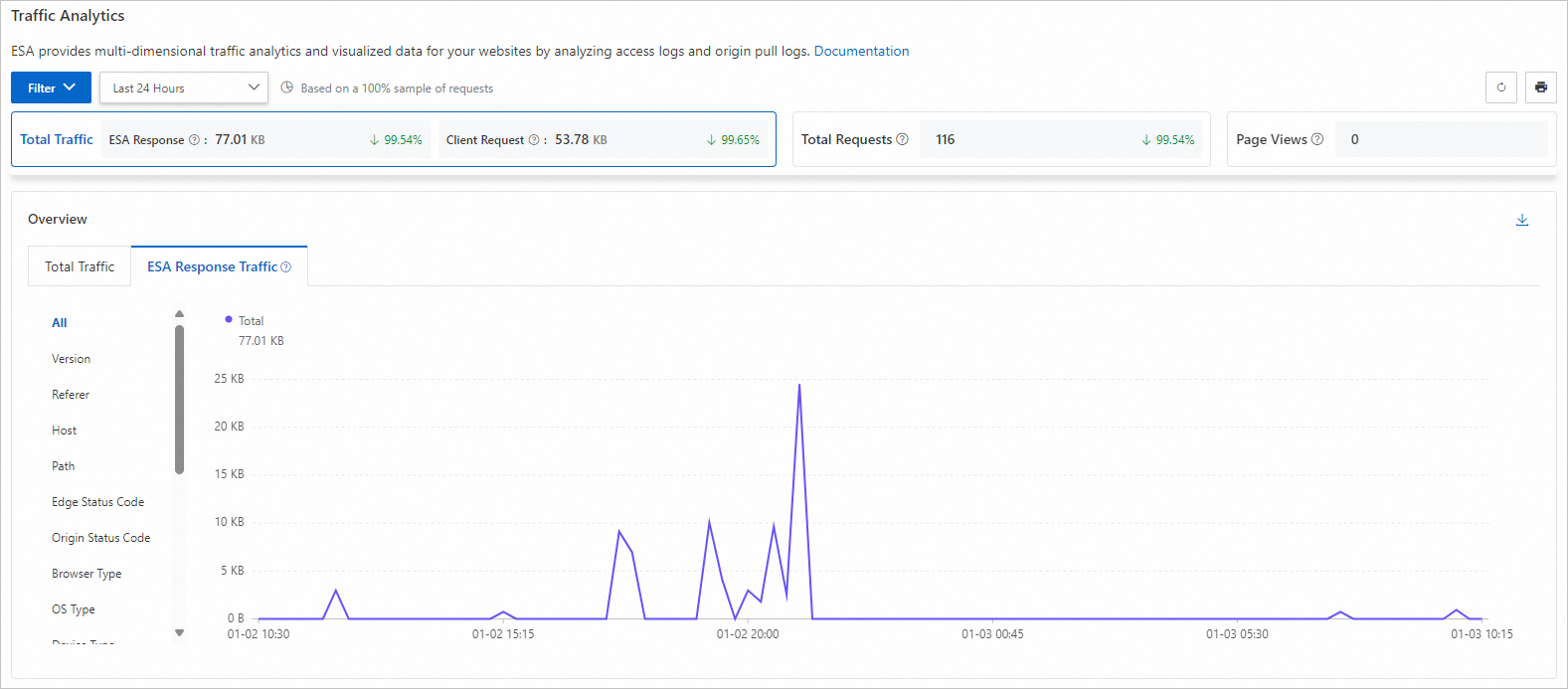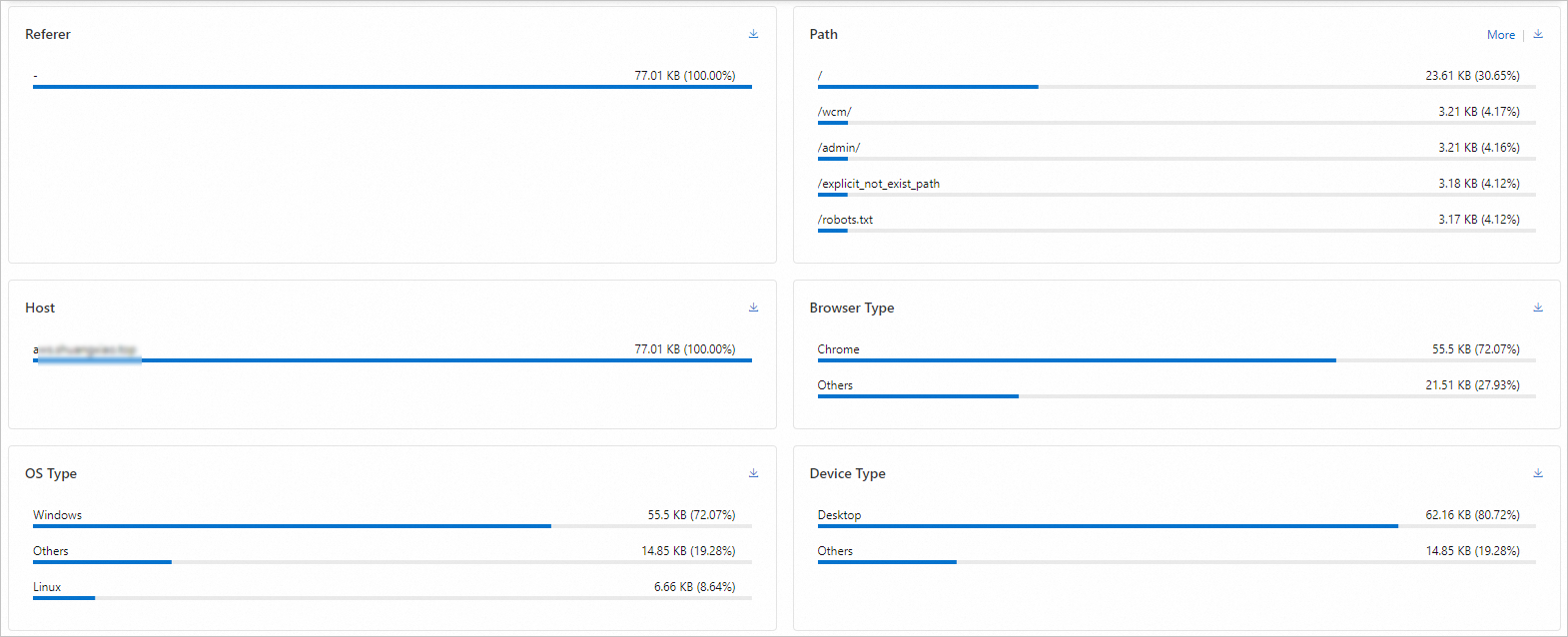This topic explains how ESA traffic analytics provides visualized analysis of different metrics from your website and walks you through how to use it.
What is traffic analytics
Traffic analytics sources data from access logs, which record information on every request through ESA points of presence (POP), such as client IP, request time, type, and response status.
ESA traffic analytics provides insights in the following aspects:
Performance evaluation: Leverage indicators such as traffic volume, page views and error codes to assess content delivery efficiency and website health to help identify key issues.
Geographical distribution analysis: Optimize market strategies based on the geographical sources of traffic or requests.
Resource planning: Allocate bandwidth resources based on traffic data over selected time frames to optimize cache policies for better service performance.
Security and compliance monitoring: Know which traffic is being protected based on data such as encrypted requests.
Check on the dashboard
Traffic analytics panels
You can see overall metrics, an overview panel, a country/region panel, and a top data panel:

Overall metrics
The overview panel presents an interactive line chart of total traffic and ESA response traffic. This provides an intuitive visualization of traffic to help you identify trends across different dimensions:
Total Traffic: The sum of all traffic transferred to the client from ESA.
Client Requests: Traffic received by ESA from clients.
Total Requests: The total number of requests received from the client by ESA. When a user views a web page, the browser typically generates multiple requests to the server to load all the content.
Page Views: The total number of successful HTTP responses with content-type HTML.
Metric change: Move the pointer over the arrow beside each metric to see the period-over-period change data. It is not displayed if no data is available for the previous period.
Overview panel
In the overview panel, you can visualize the number of page views over time through an interactive line chart. This enables you to monitor website performance and identify access trends that matter to you.
The available dimensions are:
Referer
Host
Country/Region
Chinese Mainland Provinces
Path
Edge Status Code
Origin Status Code
Browser Type
OS Type
Device Type
Client IP
HTTP Version
X-Requested-With Header
Cache Status
User Agent
Client ISP
Client ASN
HTTP Method
Content Type
Country/region panel
This is an interactive map that shows the number of requests by country or region.

Top data panels
You can filter the data to view the top five, ten, or fifteen results in the available dimensions:

Example use case
Scenario
Maintaining website stability against traffic surge.
Background
User A is an e-commerce platform operator. Their platform experienced significant slowdowns during peak traffic periods, leading to slow loads and inaccessible pages. Customer satisfaction declined, and shopping cart abandonment increased.
Solution
User A added their platform to ESA and leveraged the traffic analytics feature to view traffic patterns. User A pinpointed client IPs and detected numerous abnormal requests from a particular IP address during the traffic spikes, which overloaded the server. To mitigate this issue, User A used ESA's security capabilities to establish a WAF custom rule and added the problematic IP address to the blacklist, thereby preventing any further unauthorized access.